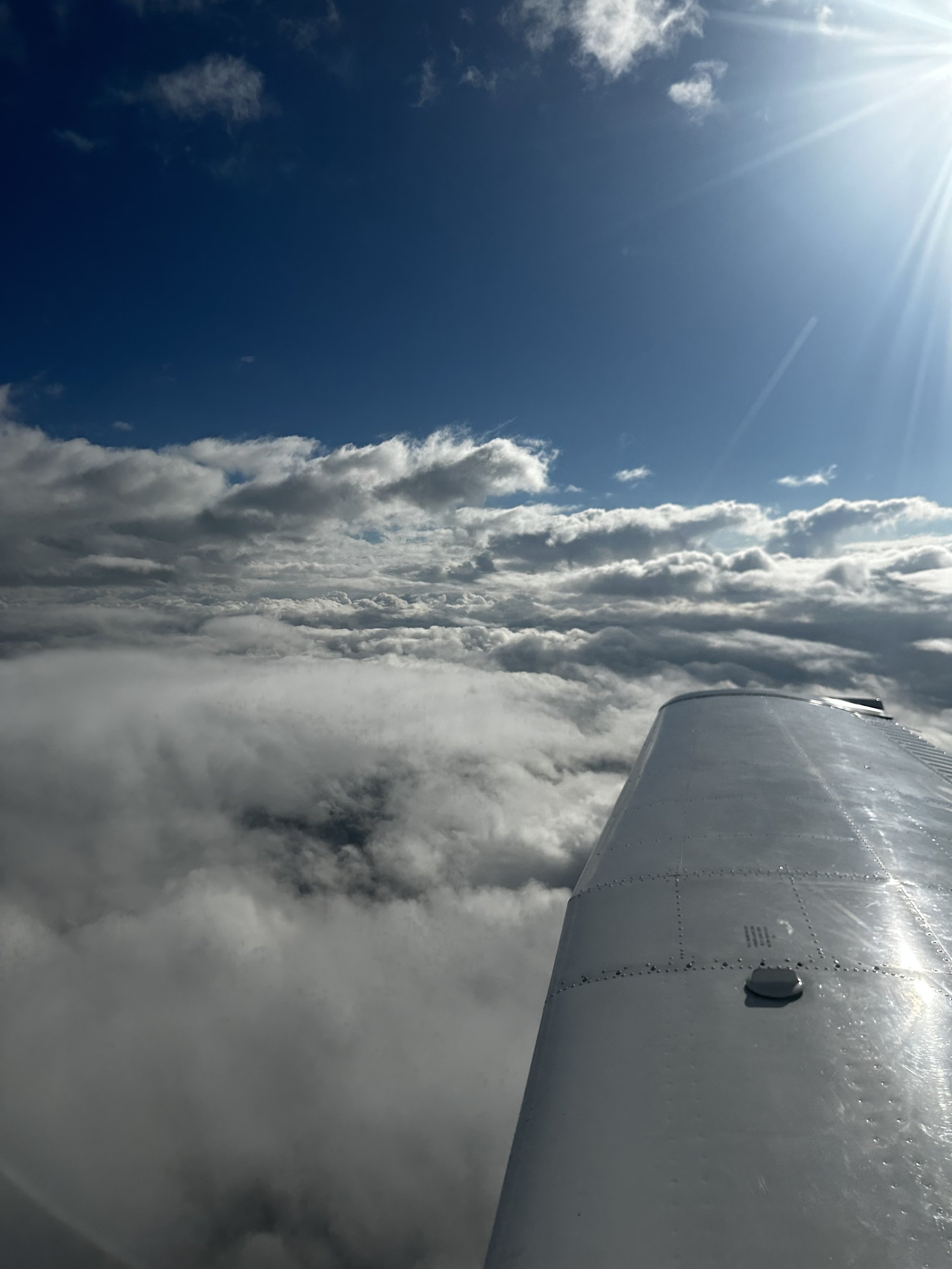
Instrument Rating
Step by step
-
Why become an instrument-rated pilot?
Becoming an instrument-rated pilot takes your flying skills to the next level, offering unmatched versatility and safety in the air. With an instrument rating, you'll unlock the ability to fly confidently in a wider range of weather conditions, relying on your instruments rather than solely on visual cues. This skill enables you to plan cross-country trips with greater flexibility, ensuring you can navigate through clouds, rain, or low visibility with ease.
-
Eligibility
The following requirements for a Instrument Rated Private Pilot Certificate must be met:
- Must hold a current private pilot certificate.
- Must be at least able to read, write, and understand English.
- Must be a U.S. Citizen (If not, you must complete the TSA’s Flight Training Security Program). -
Requirements
14 CFR Part 61 outlines the hour requirements to become a private pilot, which are as follows:
- 50 Hours Cross Country PIC
- 40 Hours Actual/Simulated Instrument
- One Cross Country at least 250nm with an instrument approach at each airport. Must include three different types of approaches with the use of navigation systems.Although the FAA lists these minimum requirements, some students may require more hours to compete their training. The length of training is dependent on a number of factors, such as:
Individual Progression: Each student progresses at their own rate, some require more practice and time with certain items. Flying more frequently can help students gain proficiency and reduce the total hours needed during flight training.
Financial Considerations: A higher frequency of lessons and consistent practice can lead to faster progress, however it requires a stronger financial commitment.
Study and Preparation: Diligent study of aviation subjects can enhance understanding and reduce the need for repeated lessons. Preparing for lessons ahead of time and “chair-flying” can also be a cost-effective way to practice procedures and reduce actual flight time needed.
Weather and Aircraft Availability: Poor weather can delay training and make it more difficult to fly frequently.
Personal Schedule: Students with flexible schedules may find it easier to complete training quickly, while those with a limited schedule may find it more difficult to dedicate time.Ultimately, the journey to becoming an instrument-rated pilot is a highly personalized experience. Your progress, financial situation, and dedication to studying and practicing will all play critical roles in determining the final cost and duration of your training. Plan wisely, fly often, and enjoy the rewarding challenge of advancing your aviation skills!
To earn an instrument rating, students must also prepare for and pass the FAA Instrument Pilot Knowledge Exam. This process requires thorough study, an endorsement from a certified instructor, and a scheduled appointment at an approved testing center. Achieving this milestone is a key step toward flying in more diverse conditions and gaining greater confidence in your abilities as a pilot.
-
Aircraft and Cost
SK Flight Instruction is based out of Schilling Aviation Services in Salina, KS. We use two of their aircraft, rented directly out to the students, for flight training. Both aircraft are great for training and provide great learning environments. The aircraft rates are fixed to include fuel and insurance.
Basic Cost Breakdown
Aircraft: $165/hour (1978 Piper Archer)
Instruction Rate: $60/hour
Cost Estimate
Average Training (60 Hours)
Aircraft Rental Cost: 60 hours x $165/hour = $9,900
Instruction Cost: 60 hours x $60/hour = $3,600
Ground Training: 20 hours x $60/hour = $1200
Additional Fees (Check-ride, knowledge exam, medical exam, study materials): $1000
Total Cost: $15,700Cancellation Policy
Students are expected to show up on-time and prepared for each flight lesson. Students are required to cancel their flight within 24 hours of the block time, if necessary. There will be a $60 no-show/late cancellation policy incurred for each hour of the scheduled training. Exceptions may be made on a base-by-base case.
